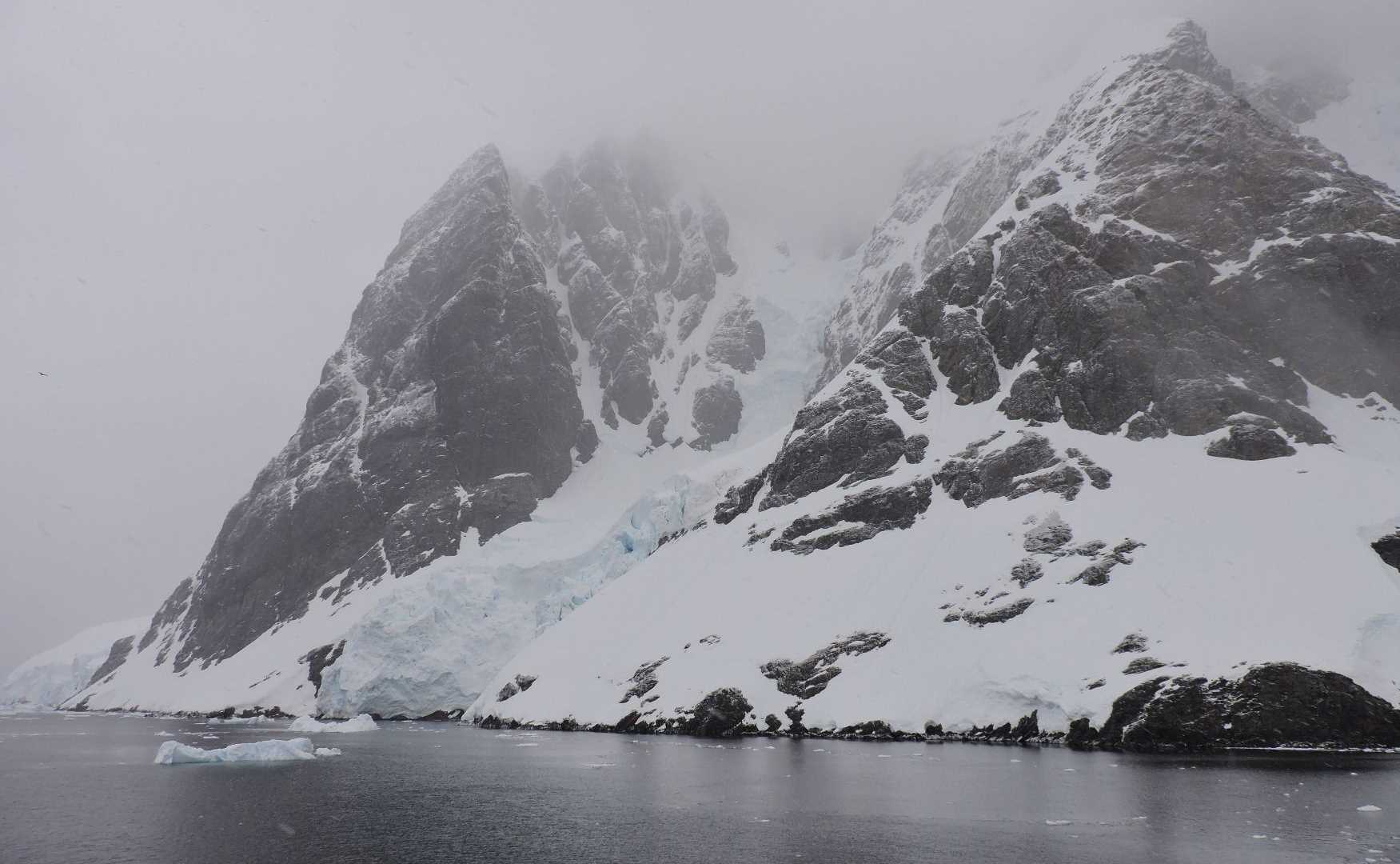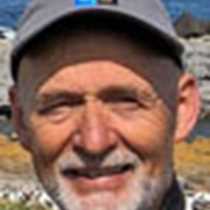Early this morning, we entered the north entrance to the Lemaire Channel. It was named by Adrian de Gerlache in 1898 in honor of the famous Belgian explorer Charles Lemaire who worked in the Congo. Some would say, including many of the staff members, that this is the most beautiful stretch of water in the Antarctic Peninsula. Located between the peninsular mainland and Booth Island, the channel measures about seven miles in length by about one mile wide. It was formed by a geological fault that has been scraped out by glacial action, and the steep mountains on either side (igneous and metamorphic rocks to port and intrusive igneous rocks to starboard) presented wonderful displays of both geology and glaciology. It was moderately choked with ice, including some nice icebergs, and the low cloud cover and light snow made it even a bit eerie.
We completed the transit just in time for breakfast and then circled around to the back side, or seaward side, of Booth Island to make a landing in the northwestern part of the island. This is where the famous French polar explorer Jean Baptist Charcot overwintered aboard FRANÇAIS in 1904 during the First French Antarctic Expedition. This part of the island is a broad, intrusive igneous structure which provided us good walking over hard-packed snow fields and smooth, broad syenite boulders. Of course, we enjoyed some wonderful views. We had the chance to hike to two sites of interest. One is known as The Observatory and contains the remains of a small stone hut located on the north face of the island where Charcot’s scientists conducted magnetometry studies in an effort to help pinpoint the South Magnetic Pole. From here, we could see the slot where Charcot moored his ship during the winter of 1904. Higher up the mountain slope from the stone hut is the island’s main penguin breeding site, and we were able to see all three species of brush-tailed penguins here…gentoos (the most numerous), a handful of chinstraps, and a couple Adélies.
While some of us were ashore, others went on a Zodiac cruise to examine a plethora of magnificent and photogenic icebergs between Booth and Pleneau Islands. Midway through the morning, the two groups switched. We commonly refer to this area as an iceberg graveyard, because the bergs are mostly grounded and will stay here until they break up and dissipate. In addition, many crabeater seals were observed in the water swimming among the icebergs. All was calm, until a pod of type B1 killer whales showed up! These are the ones that specialize in eating seals, so the crabeater seals panicked. The killer whales swam around the Zodiacs as they searched for seals. It soon became mayhem as the seals tried to climb up onto icebergs, but most of the bergs were too steep near the water and few could escape this way. We witnessed at least two crabeater seals getting captured by the killer whales. It was an incredible experience albeit a bit disturbing to some people.
Later, we sailed back through the Lemaire Channel and made our way over to Anvers Island and anchored for the night. This was in preparation for tomorrow’s visit to the American science station known as Palmer Base. Some of the base personnel came aboard to join us for the Recap and explained some of the work they do here and answered questions.









